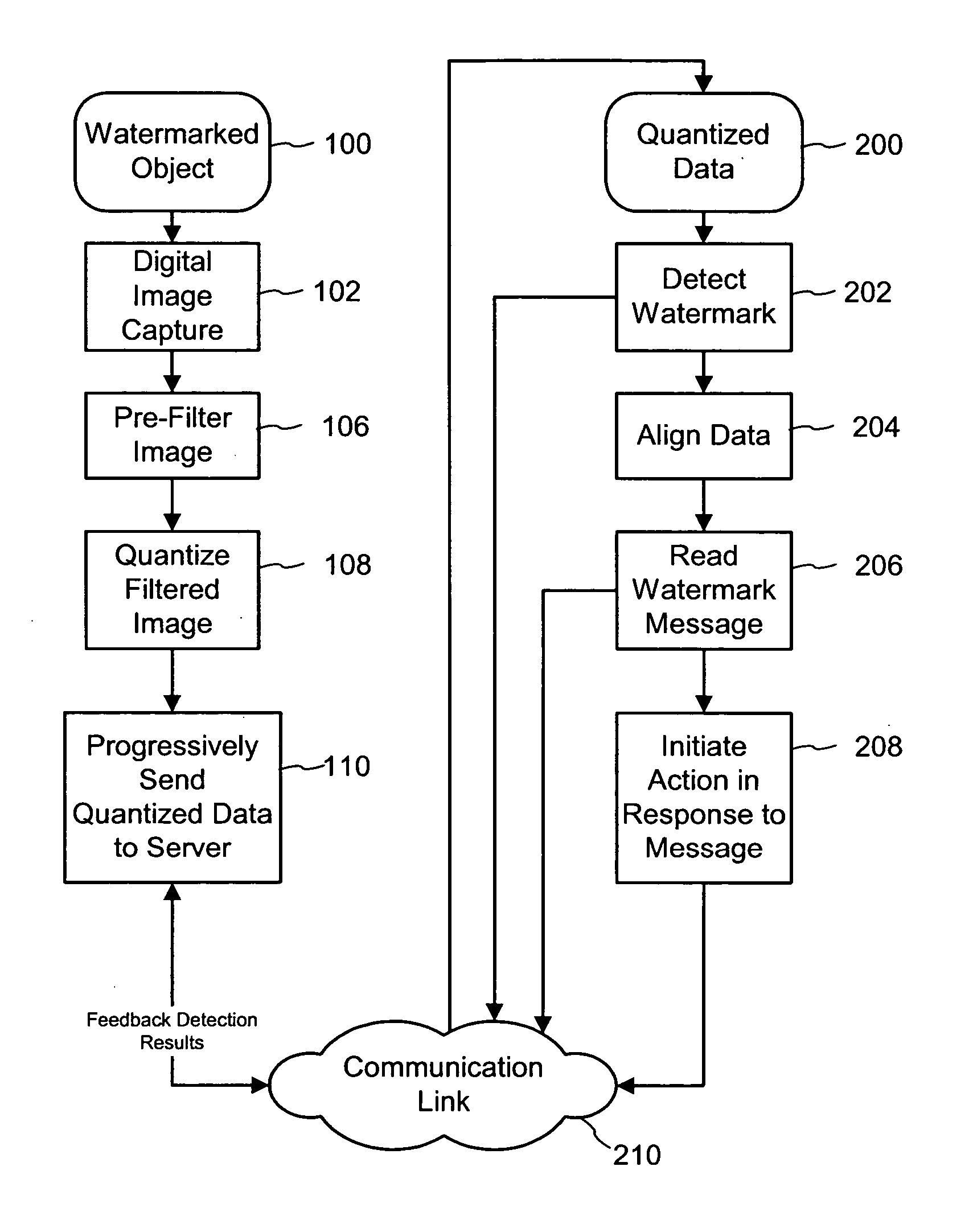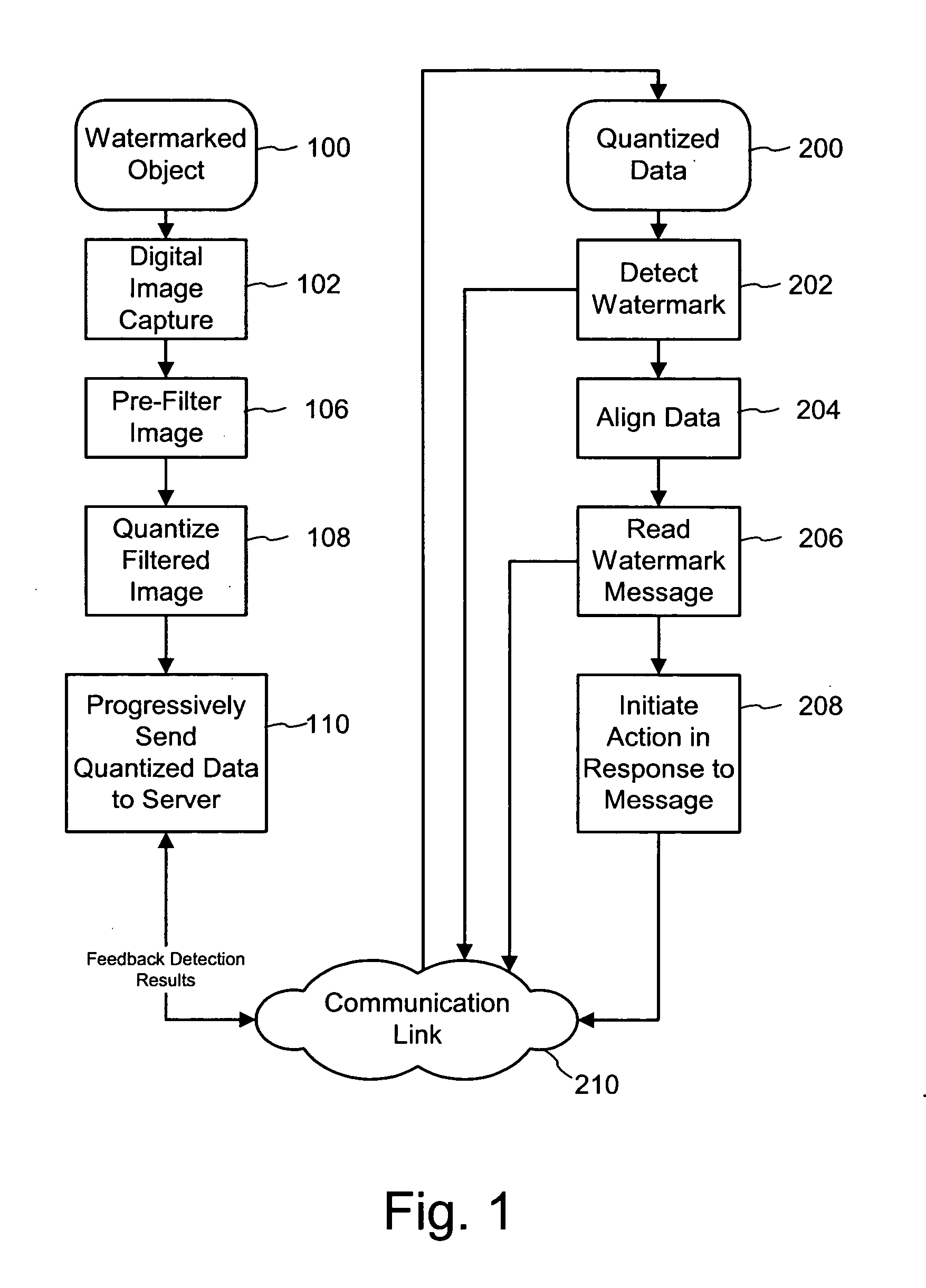Progressive watermark decoding on a distributed computing platform
- Summary
- Abstract
- Description
- Claims
- Application Information
AI Technical Summary
Benefits of technology
Problems solved by technology
Method used
Image
Examples
Embodiment Construction
[0015]FIG. 1 is a diagram illustrating a progressive watermark decoding process for a distributed computing platform. The watermark decoding process scans a digital image of a watermarked object. An image printed on the watermarked object carries a hidden digital watermark with a variable multi-bit message payload as well as a synchronization signal component. The digital watermark subtly modifies image sample values in a particular color channel of a host digital image up or down to encode the message and synchronization components. This digital image is then printed or engraved onto the surface of a physical object, such as paper, product packaging, ID cards etc. A consumer then holds the object to a web camera, which captures digital image frames of the watermarked object (100). A watermark decoding process detects the presence of the watermark, including synchronizing with the embedded synchronization component, and extracts the multi-bit message component. This message carries ...
PUM
 Login to View More
Login to View More Abstract
Description
Claims
Application Information
 Login to View More
Login to View More - R&D
- Intellectual Property
- Life Sciences
- Materials
- Tech Scout
- Unparalleled Data Quality
- Higher Quality Content
- 60% Fewer Hallucinations
Browse by: Latest US Patents, China's latest patents, Technical Efficacy Thesaurus, Application Domain, Technology Topic, Popular Technical Reports.
© 2025 PatSnap. All rights reserved.Legal|Privacy policy|Modern Slavery Act Transparency Statement|Sitemap|About US| Contact US: help@patsnap.com


